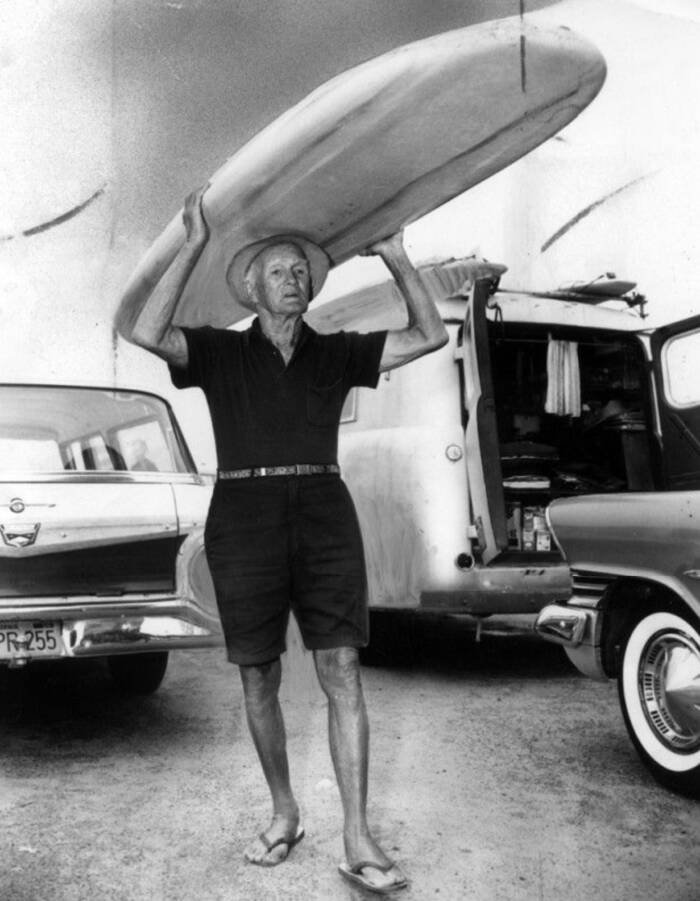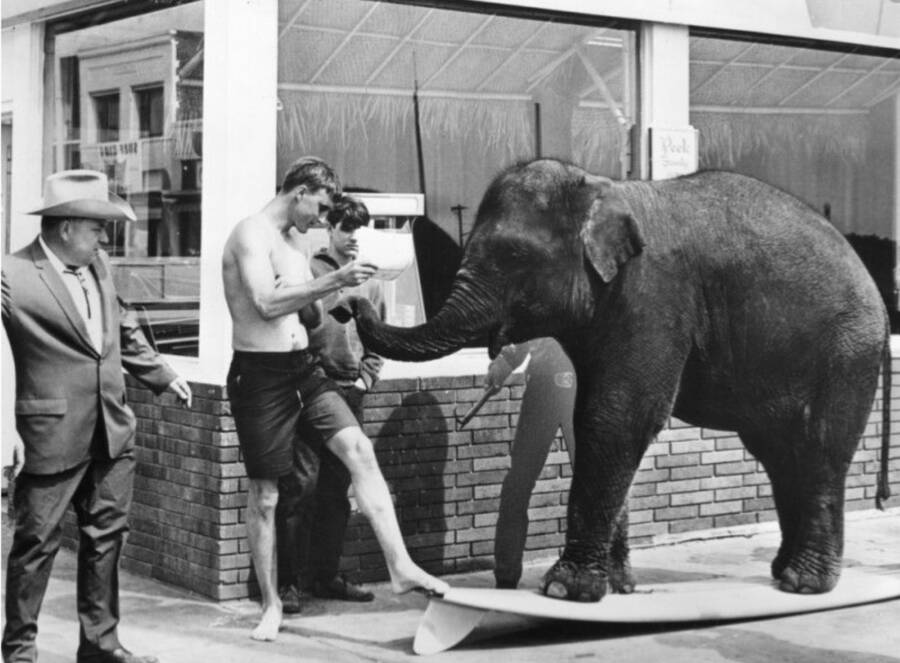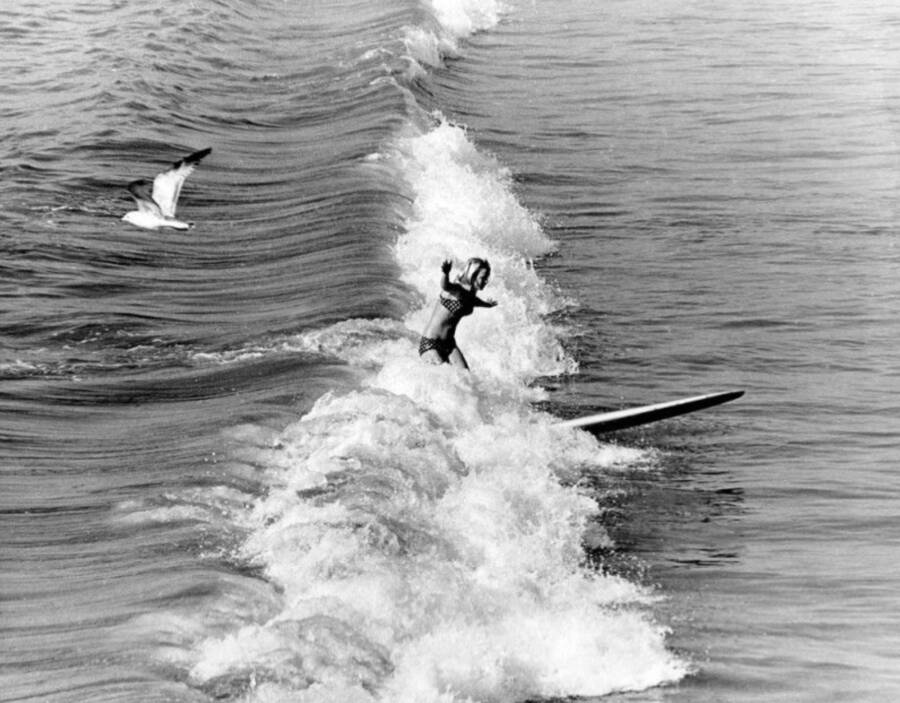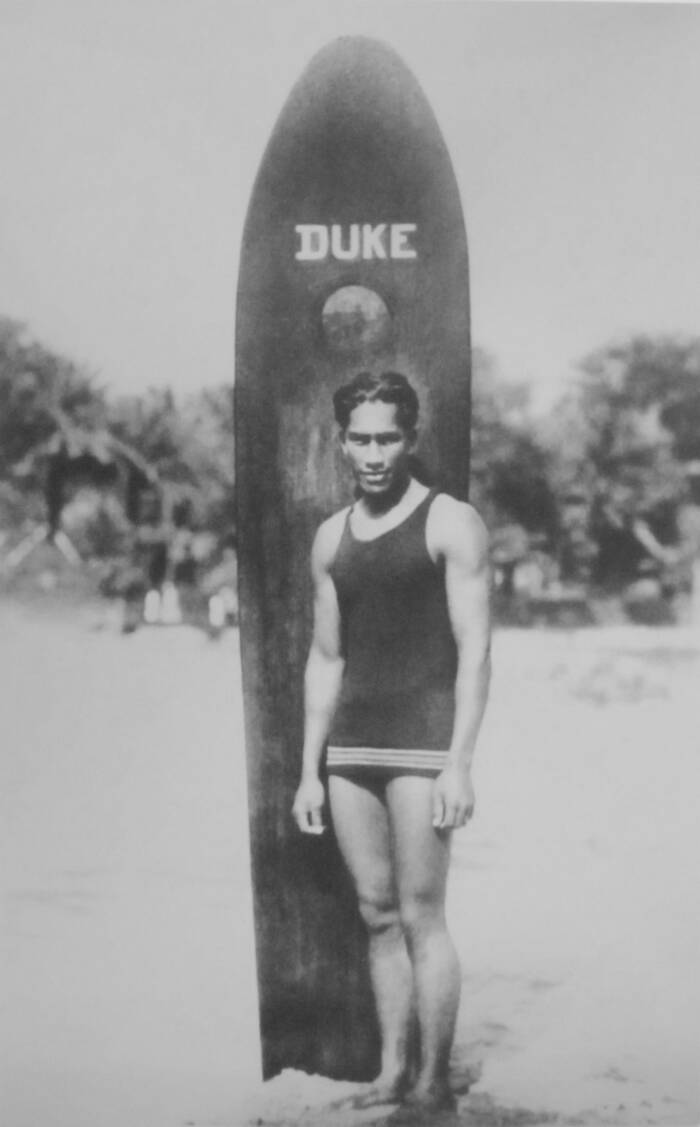These vintage pictures will transport you back to the beaches and the big waves of the ’60s and ’70s.
If the Beach Boys ’ strike unmarried “ Surfin ’ U.S.A. ” is an indicator of anything , it ’s that surf culture hit the mainstream in America in the 1960s . During the ’ sixty and ’ seventy , surf febrility was all the rage , especially in California , and it could be seen in the mode , the art , the music , and most importantly , the position .
It was for the most part thanks to Hawaiian surfboarder George Freeth and Duke Kahanamoku that surfing first start rise in popularity in the U.S. in the early 1900s . After all , their series of surfing demonstrations had attract a lot of tending in California . But by the 1960s , the once - small group of devoted surfers who first latched on exploded into a major subculture .
While some early surfers were knock as “ beach bums ” for spend all day on the piddle , the negative stigma around surfing shortly faded off . Amidst the develop , free - spirited counterculture in America , surfers fit right in with their chill vibes and love of heavy undulation . Around the same time , surfboarding was also rising in popularity in countries like Australia and New Zealand .

A group of surfers resting against their boards at Malibu Beach.
See our veranda of vintage photo below to relive the golden era of surfboarding .
Like this gallery?Share it :
The Ancient Origins Of Surfing
The early evidence of surfing as we live it today comes from 12th - century Polynesia , where cave painting depict the other day of surfing . Eventually , the Polynesians brought surfing to Hawaii , where it stay on to develop . The sea was highly important to these autochthonic islanders , and that reverence is made discernible through their art , sports , and culture .
But for a foresighted clock time , surfing remained virtually unidentified to the Western reality . It was n’t until the eighteenth century that non - islander first became cognisant of the variation , when British explorerJames Cooktraveled the South Pacific .
According to theSmithsonian Magazine , Cook ’s ship surgeon William J. Anderson recounted the first time he witnessed surfing near Tahiti :

I come across a man totter , in a small canoe , so promptly , and looking about with such eagerness , on each side , as to control all my care … He go out from the shore , till he was near the place where the beau set out to take its rising ; and watching its first move very attentively , paddle before it , with great quickness , till he found that it pass him , and had assume sufficient force to bear his canoe before it , without extend underneath . He then sat motionless , and was carried along , at the same swift rate as the wave , till it landed him upon the beach . Then he commence out , emptied his canoe , and went in search of another gallant . I could not serve concluding , that this humans felt the most supreme joy , while he was driven on , so tight and so smoothly , by the sea .
Public DomainA 19th - 100 characterisation of what former surfing may have looked like .
Another Cook crew penis , Charles Clerke , recalled observing surfing in Hawaii : " Upon this [ other version of a surfboard , ] they get astride with their leg , then laying their breasts upon it , they paddle with their hands and steer with their feet , and realise such Way thro ' the Water , that they would fairly go around the good going Boats we had in the two ship , in spight of every Exertion of the Crew , in the space of a very few Minutes . "

Cook and his men were probable the first Europeans to ever see surfboarding , and the sight was truly astounding to them . Sure , they had realise plentitude of big ship that could carry explorers around the Earth , but they had never see such meticulously crafted boards like the one in Hawaii and Tahiti .
As the decades went on , however , and more Westerners journeyed to Hawaii , settler became increasingly oppressive to the natives who lived on the Hawaiian island . During the nineteenth century , many American missionaries strongly warn surfing due to how much peel was exposed during the sport and the play that sometimes took plaza during competitions . But surfboarding did n’t die out , and by the stern terminal of the 1800s , Hawaiian tourism set out to pick up . As such , many fresh visitors to the islands learned about surfing — and some even require to try out it out for themselves .
The Rise Of Surfing In The 20th Century
While surfboarding would n’t expose into the mainstream in the United States until the 1960s , one of the first times surfriding was done by the mainland go on back in 1885 . According toGood Times , that July , three Hawaiian princes — David Kawananakoa , Edward Keliiahonui , and Jonah Kuhio Kalaniana’ole — hit the waves at the mouth of California ’s San Lorenzo River , disembarrass card made of sequoia . A bunch of roughly 30 to 40 masses were swimming nearby , and the surfing princes start to draw tending .
The story of the three princes became something of a piece of local traditional knowledge , though historiographer often disregard it as inconsequent to channel-surf history . That aver , it resonated with the correct gang , and when George Freeth , a youthful man of Native Hawaiian and Irish descent arrived in California about two decades later , the American interest in surfing was evident .
Public DomainGeorge Freeth , a pioneer surfer of Native Hawaiian and Irish descent .

Though his life was tragically short — Freeth only lived to be 35 after contracting theSpanish flu — his impact on surf civilisation was undeniable . Freeth arrived in Los Angeles in 1907 , and he ’s credited with having the tumid impact on surfboarding in the state out of all the other pioneers . He ferment as a lifeguard in Redondo Beach and Venice Beach , where he often gave surfing exhibition and became known as " the man who walked on water . "
Another other groundbreaker of surfing was Duke Kahanamoku , an booster and later friend of Freeth ’s , who helped spread surfing throughout the U.S. and other countries by also turn over demonstration . His fame was bolstered by two Olympic atomic number 79 medal wins for swimming in 1912 and 1920 . But it would still be several decades before surfing really blend in mainstream — and that ’s probably due in part to a major shift in the landscape painting : the rise of the shortboard .
Public DomainDuke Kahanamoku was a Native Hawaiian who helped popularise surf across America and other countries .

The Significance Of The Shortboard In The 1960s
Traditionally , most surfboards were considered longboards . The Hawaiians had three unlike types of boards : Olo , Alaia , and Paipo . Olo boards were 15 to 20 foot recollective , solid wood , and unmanageable to make , meaning that they were mostly reserved for the upper course of study . The Alaia was sort of a touchstone , yet thin , board , and the Paipo was the smallest and least expensive board to make ( and it was often ridden by child and beginners ) .
But start in the thirties , surfboards started to become somewhat easier to produce in America . Companies shifted from using upstanding , dumb wood to using other material like lightweight balsa Natalie Wood . But broadly speak , these surfboard were all still regard longboards .
Then , in the sixties , surfboard manufacturers started take a shit unforesightful versions of the card , which were known as shortboards . These newfangled surfboard allowed surfer to make more intricate moves on the wafture , and the shortboards were also much more manoeuvrable than their predecessors .

It helped , too , that popular cultivation latched onto surfriding , with show likeGidgetand bands like the Beach Boys pose a particular emphasis on the sportsman . Since the ' sixty and ' 70s , surfing has never really gone out of mode , and surf polish is still wide popular . But it ’s hard to deny that its find in the cultural zeitgeist was something special to behold .
After look though these vintage surfing photos , check outvintage photos of skateboarding . Or , see somephotos from the aureate age of Las Vegas .












Public DomainA 19th-century depiction of what early surfing may have looked like.

Public DomainGeorge Freeth, a pioneering surfer of Native Hawaiian and Irish descent.

Public DomainDuke Kahanamoku was a Native Hawaiian who helped popularize surfing across America and other countries.

